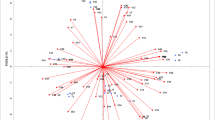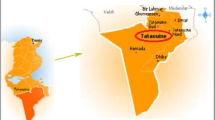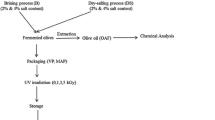Abstract
The harvest period is one of the most important factors influencing olive oil quality. This period is extended for several months and the late-extracted olive oils are characterized by quality loss and reduced resistance to oxidation. The aim of this work was to verify the effect of olive leaves addition during the oil extraction process in the olive oils quality and composition. In two consecutive years (2009 and 2010), different olive leaves amounts (1%, 2.5%, 5% and 10% w/w) were added during the extraction process of cv. Cobrançosa olive fruits, collected in the late season. Standard quality parameters, oxidative stability, fatty acids profile, tocopherols, chlorophylls, and carotenoids contents were evaluated. Olive leaves addition induces a slight increase in acidity, peroxide value, K232, and K270 without compromising olive oils classification, but the resistance to oxidation was significantly improved. Vitamin E increased nearly 30% with 10% of leaves added mainly due to the considerable increase in α-tocopherol. A similar effect was observed in the contents of chlorophylls (chlorophyll a and pheophytin a) and carotenoids (lutein and β-carotene), that attributed a more intense greener pigmentation and enhanced nutritional attributes. Significant correlations were observed for several parameters with the amounts of leaves added. Moreover, leaves addition modified the characteristics and composition of the olive oils in a way that was possible to discriminate and to classify each group.


Similar content being viewed by others
References
Achir, N., Randrianatoandro, V. A., Bohuon, P., Laffargue, A., & Avallone, S. (2010). Kinetic study of β-carotene and lutein degradation in oils during heat treatment. European Journal of Lipid Science and Technology., 112, 349–361.
Bouaziz, M., Fki, I., Jemai, H., Ayadi, M., & Sayadi, S. (2008). Effect of storage on refined and husk olive oils composition; stabilization by addition of natural antioxidants from Chemlali olive leaves. Food Chemistry, 108, 253–262.
Briante, R., Patumi, M., Terenziani, S., Bismuto, E., Febbraio, F., & Nucci, R. (2002). Olea europaea L. leaf extract and derivatives: antioxidant properties. Journal of Agricultural and Food Chemistry, 50, 4934–4940.
Casal, S., Malheiro, R., Sendas, A., Oliveira, B. P. P., & Pereira, J. A. (2010). Olive oil stability under deep-frying conditions. Food and Chemical Toxicology, 48, 2972–2979.
Choe, E., & Min, D. B. (2006). Mechanisms and factors for edible oil oxidation. Comprehensive Reviews in Food Science and Food Safety, 5, 169–186.
Commission Regulation (EC) No 1989/2003 of 6 November 2003, amending Regulation (EEC) No 2568/91 on the characteristics of olive oil and olive-pomace oil and on the relevant methods of analysis.
Commission Regulation (EEC) No 2568/91 of 11 July 1991, on the characteristics of olive oil and olive-pomace oil and on the relevant methods of analysis.
Di Bella, G., Maisano, R., La Pera, L., Lo Turco, V., Salvo, F., & Dugo, G. (2007). Statistical characterization of Sicilian olive oils from the Peloritana and Maghrebian zones according to the fatty acids profile. Journal of Agricultural and Food Chemistry, 55, 6568–6574.
Farag, R. S., El-Baroty, G. S., & Basuny, A. M. (2003). The influence of phenolic extracts obtained from the olive plant (cvs. Picual and Kronakii), on the stability of sunflower oil. International Journal of Food Science and Technology, 38, 81–87.
Ferreira, I. C. F. R., Barros, L., Soares, M. E., Bastos, M. L., & Pereira, J. A. (2007). Antioxidant activity and phenolic contents of Olea europaea L. leaves sprayed with different copper formulations. Food Chemistry, 103, 188–195.
García, J. M., Gutiérrez, F., Barrera, M. J., & Albi, M. A. (1996a). Storage of mil olives on an industrial scale. Journal of Agricultural and Food Chemistry, 44, 590–593.
García, J. M., Seller, S., & Pérez-Camino, M. C. (1996b). Influence of fruit ripening on olive oil quality. Journal of Agricultural and Food Chemistry, 44, 3516–3520.
Gurdeniz, G., & Ozen, B. (2009). Detection of adulteration of extra-virgin olive oil by chemometric analysis of mid-infrared spectral data. Food Chemistry, 116, 519–525.
Gutierrez, F., Garrido, J., Gallardo, L., Gandul, B., & Minguez, M. I. (1992). Action of chlorophylls on the stability of virgin olive oil. Journal of the American Oil Chemists’ Society, 69, 866–871.
Gutiérrez, F., Arnaud, T., & Garrido, A. (2001). Contribution of polyphenols to the oxidative stability of virgin olive oil. Journal of the Science of Food and Agriculture, 81, 1463–1470.
Hermoso, M., Uceda, M., García, A., Morales, B., Frias, M.L. & Fernández, A. (1991). Elaboración de Aceite de Calidad; Consejeria de Agricultura y Pesca, Serie Apuntes 5/92; Sevilla, Spain.
Hooper, L., Bartlett, C., Smith, G. D., & Ebrahim, S. (2002). Systematic review of long-term effects of advice to reduce dietary salt in adults. British Medical Journal, 325, 628–632.
International Olive Council (2010). Available at: http://www.internationaloliveoil.org. Accessed 8 July 2011.
ISO 9936 (2006). Animal and vegetable fats and oils—determination of tocopherol and tocotrienol contents by high-performance liquid chromatography.
Kiritsakis, K., Kontominas, M. G., Kontogiorgis, C., Hadjipavlou-Litina, D., Moustakas, A., & Kiritsakis, A. (2010). Composition and antioxidant activity of olive leaf extracts from Greek olive cultivars. Journal of the American Oil Chemists’ Society, 87, 369–376.
Korukluoglu, M., Sahan, Y., Yigit, A., Ozer, E. T., & Gucer, S. (2010). Antibacterial activity and chemical constitutions of Olea europaea L. leaf extracts. Journal of Food Processing and Preservation, 34, 383–396.
Laguerre, E. P., Lecomte, J., & Villeneuve, P. (2007). Evaluation of the ability of antioxidants to counteract lipid oxidation; existing methods, new trends and challenges. Progress in Lipid Research, 46, 244–282.
Laguerre, M., Giraldo, L. J. L., Piombo, G., Figueroa-Espinoza, M. C., Pina, M., Benaissa, M., et al. (2009). Characterization of olive-leaf phenolics by ESI-MS and evaluation of their antioxidant capacities by the CAT assay. Journal of the American Oil Chemists’ Society, 86, 1215–1225.
Lee, O.-H., Lee, B.-Y., Lee, J., Lee, H.-B., Son, J.-Y., Park, C.-S., et al. (2009). Assessment of phenolics-enriched extract and fractions of olive leaves and their antioxidant activities. Bioresource Technology, 100, 6107–6113.
Lin, P., Chen, Y., & He, Y. (2009). Identification of geographical origin of olive oil using visible and near-infrared spectroscopy technique combined with chemometrics. Food and Bioprocess Technology. doi:10.1007/s11947-009-0302-z.
Lizhi, H., Toyoda, K., & Ihara, I. (2010). Discrimination of olive oil adulterated with vegetable oils using dielectric spectroscopy. Journal of Food Engineering, 96, 167–171.
López, A., García, P., & Garrido, A. (2008). Multivariate characterization of table olives according to their mineral nutrient composition. Food Chemistry, 106, 369–378.
Lucas, A., Martinez de la Ossa, E., Rincón, J., Blanco, M. A., & Garcia, I. (2002). Supercritical fluid extraction of tocopherol concentrates from olive tree leaves. Journal of Supercritical Fluids, 22, 221–228.
Malheiro, R., Casal, S., Ramalhosa, E. & Pereira, J.A. (2011a). Microwave heating: a time saving technology or a way to induce vegetable oils oxidation? In: Grundas S (Ed.) Advances in induction and microwave heating of mineral and organic materials (pp 597–614). InTech, Rijeka, Croatia.
Malheiro, R., Sousa, A., Casal, S., Bento, A., & Pereira, J. A. (2011b). Cultivar effect on the phenolic composition and antioxidant potential of stoned green table olives. Food and Chemical Toxicology, 49, 450–457.
Malheiro, R., Casal, S., Sousa, A., Guedes de Pinho, P., Peres, A. M., Dias, L. G., et al. (2011c). Effect of cultivar on sensory characteristics, chemical composition, and nutritional value of stoned green table olives. Food and Bioprocess Technology. doi:10.1007/s11947-011-0567-x.
Mannina, L., Dugo, G., Salvo, F., Cicero, L., Ansanelli, G., Calcagni, C., et al. (2003). Study of the cultivar–composition relationship in Sicilian olive oils by GC, NMR and statistical methods. Journal of Agricultural and Food Chemistry, 51, 120–127.
Maroco, J. (2003). Análise Estatística, com utilização do SPSS. Lisboa: Edições Sílabo.
Martinéz-Suárez, J. M. (1973). Recientes estúdios de la almazara experimental del instituto de la grasa. Rivista Italiana delle Sostanze Grasse, 50, 325–330.
Matos, L. C., Cunha, S. C., Amaral, J. S., Pereira, J. A., Andrade, P. B., Seabra, R. M., et al. (2007). Chemometric characterization of three varietal olive oils (Cvs. Cobrançosa, Madural and Verdeal Transmontana) extracted from olives with different maturation indices. Food Chemistry, 102, 406–414.
Meirinhos, J., Silva, B. M., Valentão, P., Seabra, R. M., Pereira, J. A., Dias, A., et al. (2005). Analysis and quantification of flavonoidic compounds from Portuguese olive (Olea europaea L.) leaf cultivars. Natural Product Research, 19, 189–195.
Morrissey, P. A., & Sheehy, P. J. A. (1999). Optimal nutrition: vitamin E. Proceedings of the Nutrition Society, 58, 459–468.
Nouros, P. G., Georgiou, C. A., & Polissiou, M. G. (1999). Direct parallel flow injection multichannel spectrophotometric determination of olive oil peroxide value. Analytica Chimica Acta, 389, 239–245.
Oliveros, C. C., Boggia, R., Casale, M., Armanino, C., & Forina, M. (2005). Optimisation of a new headspace mass spectrometry instrument: discrimination of different geographical origin olive oils. Journal of Chromatography. A, 1076, 7–15.
Paiva-Martins, F., Correia, R., Felix, S., Ferreira, P., & Gordon, M. (2007). Effects of enrichment of refined olive oil with phenolic compounds from olive leaves. Journal of Agricultural and Food Chemistry, 55, 4139–4143.
Pereira, J. A., Casal, S., Bento, A., & Oliveira, M. B. P. P. (2002). Influence of olive storage period on oil quality of three Portuguese cultivars of Olea europaea, Cobrançosa, Madural and Verdeal Transmontana. Journal of Agricultural and Food Chemistry, 50, 6335–6340.
Pereira, J. A., Alves, M. R., Casal, S., & Oliveira, M. B. P. P. (2004). Effect of olive fruit fly infestation on the quality of olive oil from cultivars Cobrançosa, Madural and Verdeal Transmontana. Italian Journal of Food Science, 16, 355–365.
Pereira, A. P., Ferreira, I. C. F. R., Marcelino, F., Valentão, P., Andrade, P. B., Seabra, R., et al. (2007). Phenolic compounds and antimicrobial activity of olive (Olea europaea L. Cv. Cobrançosa) leaves. Molecules, 12, 1153–1162.
Rencher, A. C. (1995). Methods of multivariate analysis. New York: Wiley.
Rotondi, A., Bendini, A., Cerretani, L., Mari, M., Lercker, G., & Toschi, T. G. (2004). Effect of olive ripening degree on the oxidative stability and organoleptic properties of Cv. Nostrana di Brisighella extra virgin olive oil. Journal of Agricultural and Food Chemistry, 52, 3649–3654.
Salta, F. N., Mylona, A., Chiou, A., Boskou, G., & Andrikopoulos, N. K. (2007). Oxidative stability of edible vegetable oils enriched in polyphenols with olive leaf extract. Food Science and Technology International, 13, 413–421.
Salvador, M. D., Aranda, F., & Fregapane, G. (2001). Influence of fruit ripening on ‘Cornicabra’ virgin olive oil quality. A study of four successive crop seasons. Food Chemistry, 73, 45–53.
Sudjana, A. N., D’Orazio, C., Ryan, V., Rasool, N., Ng, J., Islam, N., et al. (2009). Antimicrobial activity of commercial Olea europaea (olive) leaf extract. International Journal of Antimicrobial Agents, 33, 461–463.
Author information
Authors and Affiliations
Corresponding authors
Rights and permissions
About this article
Cite this article
Malheiro, R., Casal, S., Teixeira, H. et al. Effect of Olive Leaves Addition during the Extraction Process of Overmature Fruits on Olive Oil Quality. Food Bioprocess Technol 6, 509–521 (2013). https://doi.org/10.1007/s11947-011-0719-z
Received:
Accepted:
Published:
Issue Date:
DOI: https://doi.org/10.1007/s11947-011-0719-z




